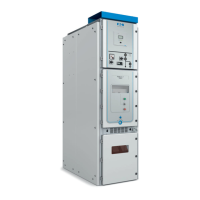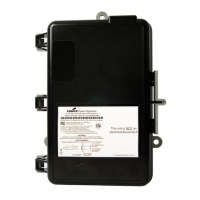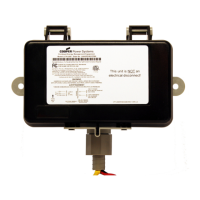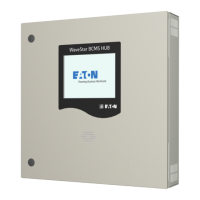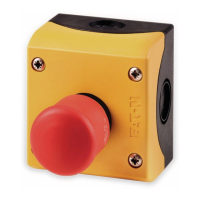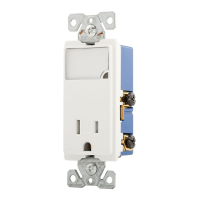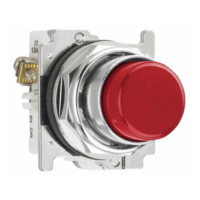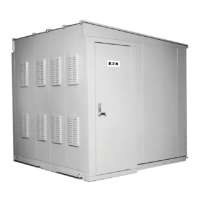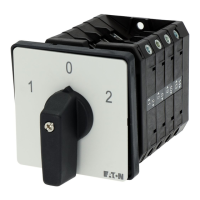For more information visit:
www.EatonElectrical.com
TD03309002E
Technical Data
Page
4
Effective: January 2005
Storage, Handling,
Installation and
Maintenance of Controllers
Figure 2. New Figure 3. Start of Service Life Figure 4. End of Service Life
Table 1. Contact Evaluation
Table 2. Abnormal Wear Conditions
Overtravel Measurement
Contact life has ended when the over-
travel of the contacts has been
reduced to .020 inch.
Overtravel of the contact assembly is
that part of the stroke which the mov-
ing contacts would travel after touch-
ing the fixed contacts, if they were not
blocked from movement by the fixed
contacts.
A method of measuring overtravel is
as follows:
A. Place a .020 inch feeler gauge
between the armature
and magnet, with the armature
held tightly against the magnet.
B. Check continuity in each phase,
i.e., determine if circuit from ter-
minal-to-terminal for each pole is
open under these conditions.
C. If there is continuity through all
phases, the remaining overtravel
is sufficient. If there is not continu-
ity through all phases, replace all
stationary and moving contacts
plus moving contact overtravel
springs. After replacing parts,
manually operate contactor to be
sure binding does not occur.
When Contact Replacement Is
Required
Contacts should be replaced when
indicated by either the visual or mea-
surement methods outlined in the pre-
vious paragraphs.
In the case of extreme pitting or curling
of the contacts, it is possible that the
measurement method would indicate
sufficient overtravel, but the contacts
should be replaced. In this case, the
application should be questioned. A
larger unit may be required to meet
jogging duty, inching duty, or abnor-
mal load currents.
When the appearance of the contacts
is good, the overtravel should be mea-
sured. The contact material cannot be
allowed to wear completely away. If
too much wear is allowed, single phas-
ing of a three-phase motor or contact
welding may take place.
Time of Service Contact Appearance
New The new contact has a uniform silver color. (See
Figure 2
.)
Start of Service The contact surface will have a blue coloring. The geometric form of the contact is unchanged. The sharp outer
corners will be rounded with small silver beads. (See
Figure 3
.)
Intermediate Service to End of
Service Life
The coloring changes to brown or black with distributed small silvery white areas. The surface has a finely chiselled
appearance. Material transfer causes small peaks and valleys in the contact button surface. (See
Figure 4
.)
Contact Appearance Cause
Curling and Separation of Corner
of Contact
Curling is usually a result of service that produces very high heat, as under jogging or inching duty.
Irregular Contour or Slantwise
Wear
One corner of a contact may wear more quickly than the other three corners. This wear is normally due to
misalignment of the moving and stationary contacts. Contacts should be replaced if it is apparent that one contact is
nearly making direct contact with the contact carrier.
Large Beads of Silver on Edges of
Contacts
Breaking an excessive current.
Welded Spot (Core of Smooth,
Shining Silver Surrounded by a
Roughened Halo
Making an excessive current. High frequency of operation, i.e., jogging.

